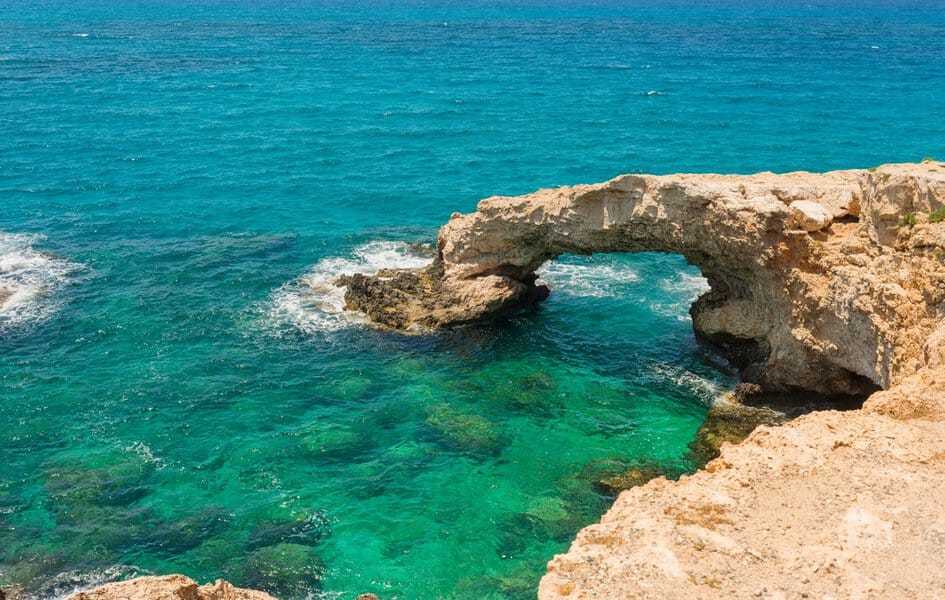
20 Things to Do in Cyprus
Cyprus offers a lot for different groups of people, from ancient ruins and medieval castles to stunning beaches and vibrant city centers.
Whether you choose to explore by bus, which is both cheap and convenient, or rent a car (keeping in mind that driving is on the left side), you’ll find that getting around is easy.
Cyprus is unique because it is divided into North Cyprus, which is Turkish-administered, and South Cyprus, the Greek Cypriot part, each offering its own distinct experiences.
1. Discover Larnaca Medieval Fort
Location: Google Maps
Located at the edge of Larnaca’s seafront, the castle dates back to the Middle Ages. Wander through its rooms and explore its small museum filled with artifacts. The castle also provides stunning views of the surrounding area.
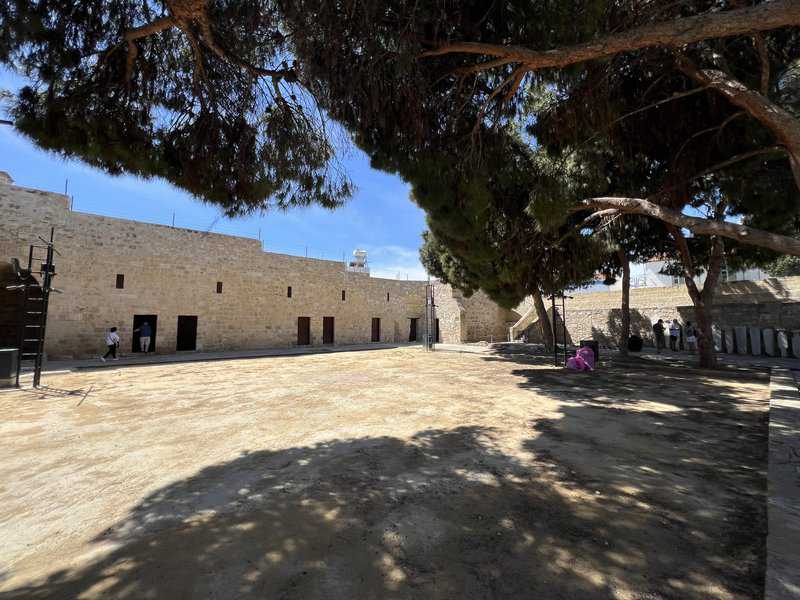
2. Visit the Church of Saint Lazarus in Larnaca
Location: Google Maps, Tickets: Buy them directly at the place
The Church of Saint Lazarus is a beautiful example of Byzantine architecture. Built in the 9th century, it’s said to house the tomb of Saint Lazarus. The church is adorned with intricate icons and stunning woodwork. It’s located in the heart of Larnaca, making it easy to include in your itinerary.
3. Relax on Ayia Napa’s Nissi Beach
Location: Google Maps
Nissi Beach is one of the most beautiful beaches in Cyprus. Its turquoise waters and white sands attract visitors from around the world. The shallow sea makes it perfect for swimming and wading. There are plenty of amenities, including sunbeds, umbrellas, and beach bars.
4. Explore Ayia Napa Center
Visit the Monastery of Ayia Napa, a serene and historic site. Check out the charming Fountain in Central Square. Don’t miss the Ayia Napa monument, a popular photo spot. The center is filled with shops, cafes, and restaurants, making it a lively place to explore.
5. Wander Through Ayia Napa Sculpture Park
Location: Google Maps
The park features a wide variety of sculptures from artists around the world. Stroll through and admire the creativity and skill on display. It’s free to enter and offers beautiful views of the coastline. The park is perfect for a leisurely walk and artistic inspiration.
6. Marvel at the Sea Caves Near Ayia Napa
Location: Google Maps
The Sea Caves near Ayia Napa are a natural wonder. These stunning formations are accessible by bus from Ayia Napa. The caves are great for photography and exploring. The crystal-clear waters around them are perfect for snorkeling.
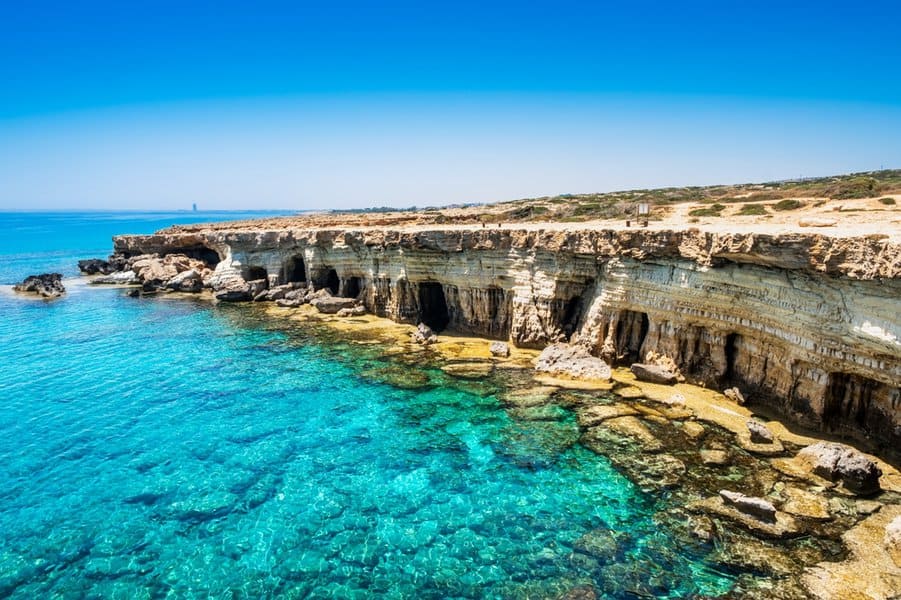
7. Hike Cape Cavo Greco
Location: Google Maps
Cape Cavo Greco offers some of the best hiking trails in Cyprus. You can get here by bus from Ayia Napa. The trails provide breathtaking views of the coastline and sea. The area is also home to a variety of wildlife and plant species.

8. Tour the Cyprus Museum in Nicosia
Location: Google Maps, Tickets: purchase them directly at the place (on same days, entrance to the museum is free)
The Cyprus Museum in Nicosia houses the island’s most important archaeological finds. Explore exhibits ranging from the Neolithic period to the Byzantine era. The museum provides a comprehensive look at Cyprus’s rich history. The well-curated displays offer an educational experience for all ages.
9. Stroll Down Ledra Street in Nicosia
Location: Google Maps
Ledra Street is a bustling pedestrian street in Nicosia. It’s lined with shops, cafes, and historic buildings. The street is known for its lively atmosphere and cultural significance. Strolling down Ledra Street, you’ll find plenty of places to eat, shop, and relax. It’s a great way to experience the heart of the city.
10. See the Liberty Monument in Nicosia
Location: Google Maps
The Liberty Monument commemorates Cyprus’s struggle for independence. It’s located near the old city walls of Nicosia. The monument features impressive sculptures and inscriptions. It’s a significant historical site and a place for reflection. Visiting the monument offers insight into Cyprus’s national heritage.
11. Walk the Medieval Walls of Nicosia
Location: Google Maps
These fortifications once protected the city from invaders. Walking along the walls, you’ll encounter various gates (see below Famagusta Gate) and bastions. The walls provide panoramic views of the city and its surroundings. They are a must-visit for history buffs and architecture enthusiasts.
12. Visit Famagusta Gate in Nicosia
Location: Google Maps
Famagusta Gate now serves as a cultural center, hosting various events and exhibitions. Visiting the gate offers a blend of history and contemporary culture.

13. Relax at Faneromeni Square in Nicosia
Location: Google Maps
Faneromeni Square is a charming and historic part of Nicosia, and a home to the beautiful Faneromeni Church. It’s a great place to sit and relax while taking in the local atmosphere.
14. Visit the Church of Panayias Phaneromenis
Location: Google Maps
The Church of Panayias Phaneromenis is a significant religious site in Nicosia. It features beautiful architecture and intricate iconography. It’s a peaceful place to visit and offers a glimpse into the island’s religious heritage.
15. Visit Büyük Han (The Great Inn)
Location: Google Maps
Büyük Han, also known as The Great Inn, is located in the Turkish side of Nicosia. This beautifully restored 16th-century caravanserai now houses artisan shops, galleries, and cafes. It’s a vibrant cultural hub where you can experience traditional Cypriot crafts and hospitality. To visit, you’ll need to cross the border in the city that separates the North and South sides.
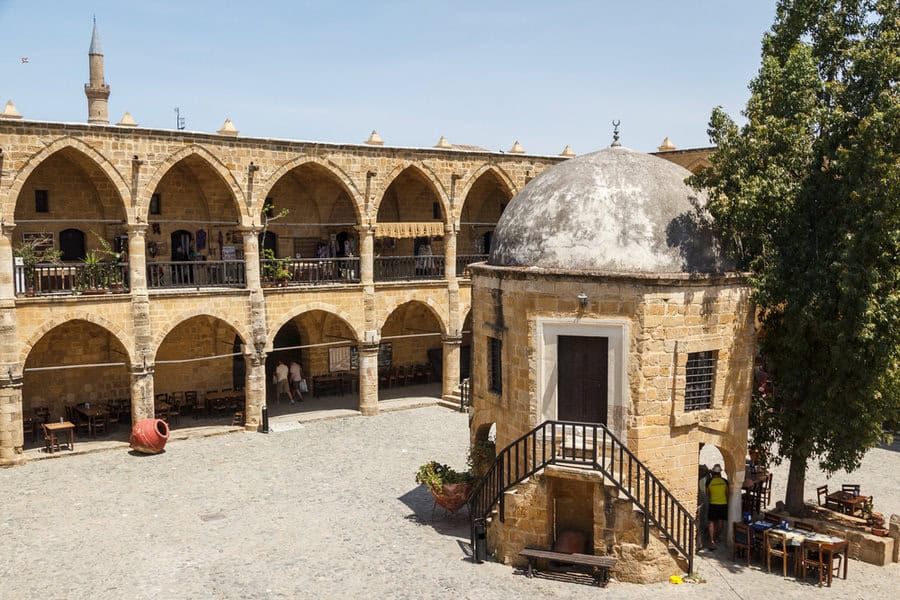
16. Explore the Archaeological Site of Nea Paphos
Location: Google Maps
The Archaeological Site of Nea Paphos is a UNESCO World Heritage Site. It features well-preserved ruins from ancient times. Highlights include stunning mosaics and the remains of Roman villas. The site offers a fascinating look into the history of Paphos. It’s a must-see for history lovers and archaeology enthusiasts.
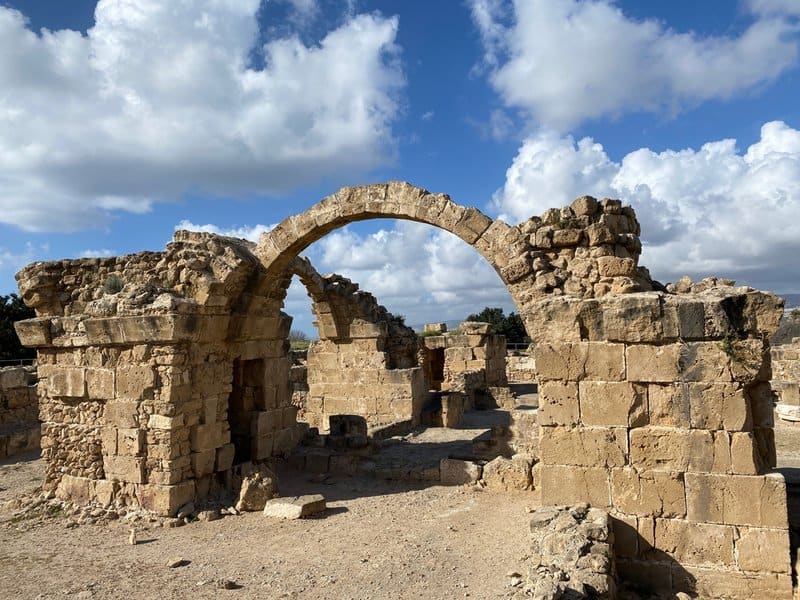
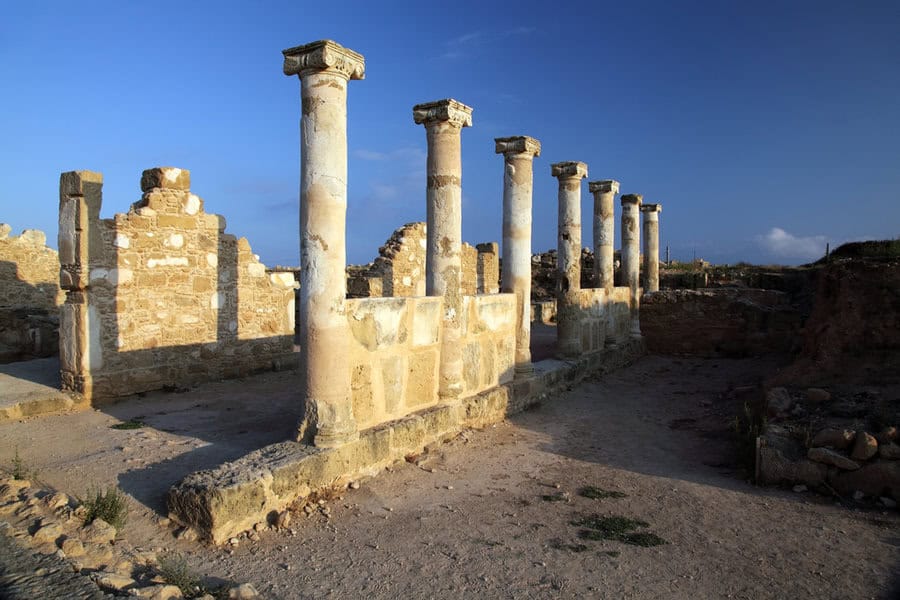
17. See Petra tou Romiou (Aphrodite’s Rock)
Location: Google Maps
According to mythology, Petra tou Romiou, also known as Aphrodite’s Rock, is the birthplace of Aphrodite, the goddess of love. It’s a great spot for swimming, photography, and enjoying the view.

18. Discover the Tombs of the Kings
Location: Google Maps
The Tombs of the Kings is an impressive archaeological site in Paphos. The tombs date back to the 4th century BC and are carved out of solid rock. Walking through the site, you’ll feel like you’ve stepped back in time. The area is well-preserved and offers insight into ancient burial practices.

19. Admire Cypriot Architecture
Cypriot architecture showcases a blend of Greek and Mediterranean influences. You’ll find beautiful examples in churches, old houses, and public buildings.
20. Swim in the Mediterranean Sea
Cyprus boasts some of the best beaches in the Mediterranean. Top spots include Limassol, Paphos, and Ayia Napa. The clear, warm waters are perfect for swimming and water activities. Many beaches offer amenities like sunbeds, umbrellas, and beach bars.
FAQs
How do I get to the airport in Larnaca?
Larnaca International Airport (LCA) is the main airport in Cyprus. You can reach the airport by bus, taxi, or car. There are frequent bus services from major cities like Nicosia, Limassol, and Ayia Napa. Taxis are available 24/7, but buses are the more affordable option.
Is it easy to travel between cities in Cyprus using public transport?
Yes, Cyprus has a reliable bus network that connects major cities. Buses are frequent and affordable, especially between cities like Nicosia, Limassol, Ayia Napa, and Larnaca. Intercity buses are an excellent choice for budget travelers.
How much does it cost to use buses for city-to-city travel in Cyprus?
Bus fares between cities are relatively cheap, usually ranging from €4 to €7 depending on the route. For example, a bus ride from Larnaca to Nicosia costs around €4.50, and from Larnaca to Ayia Napa about €5.50.
What are the alternatives to buses for traveling in Cyprus?
Apart from buses, you can also rent a car, which gives you more flexibility to explore remote areas. Taxis are available but can be more expensive. Biking is also an option for short distances within cities or along the coast.
How frequent are bus connections between major cities?
Buses between Larnaca, Nicosia, Limassol, and Ayia Napa run frequently throughout the day, especially during peak travel times. On average, buses depart every 30 to 60 minutes.
Are taxis expensive in Cyprus?
Taxis in Cyprus are more expensive compared to buses, especially for long distances. For instance, a taxi from Larnaca to Nicosia can cost around €50, while the same trip by bus costs around €4.50.
Do I need to rent a car to explore Cyprus?
While renting a car is not necessary for city-to-city travel thanks to the efficient bus network, it might be useful if you plan to explore rural areas, beaches, and off-the-beaten-path destinations. In Cyprus, motorists drive on the left-hand side of the road, just like they do in the UK.
What is the best time to visit Cyprus for good weather and fewer crowds?
The best time to visit Cyprus is during spring (April to June) and autumn (September to October) when the weather is pleasant and there are fewer tourists. July and August are peak season with higher temperatures and crowds.
Is it safe to travel in Cyprus?
Yes, Cyprus is generally considered a safe destination for tourists. Petty crime is rare, but as with any travel destination, it’s important to stay vigilant, especially in crowded areas.
